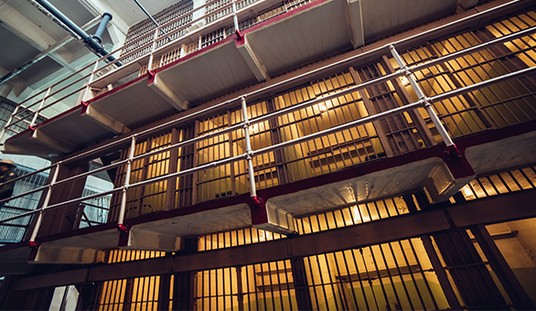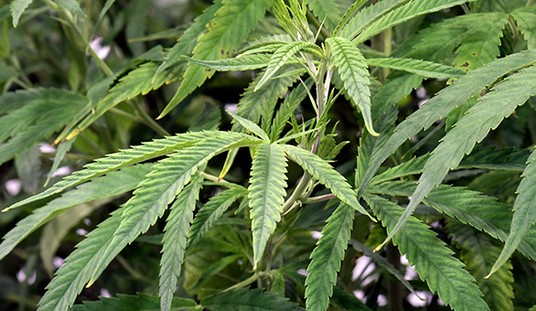What is a Tactical Knife? Every Company seems to make them. Everyone seems to carry them. Or do they?
Well, first let me say this: I’ve heard some people (Knifemakers/Knife Companies) say the following, that there’s no difference between a “regular” knife and a “Tactical Knife.” I ask them this question: Is there a difference between a “Combat Handgun” and a “regular” hand gun? Damn right there is. But unless you know what those differences are, you probably can’t tell the difference. It has a barrel, a handle and it shoots, just like every other gun. However, there are differences and to the educated or experienced, these subtleties can literally spell the difference between life and death. There is also a difference between a “Tactical Knife” and a “regular” knife. Let’s take a look.
1. Design
When NASA asked me to design a knife for the International Space Station they gave me a list of tasks the knife would be used for, including some that were very specific and unique. I designed the knife from the very start, to fit those needs. When the US Navy asked me to design a rescue knife for their special boat units (SBU), they gave me a list of tasks the knife would be required to perform. I designed the knife specifically to address those tasks. The request for this knife came as a result of a tragic accident in which a number of U.S. Marines drowned in a helo crash. The rescue knives the SBU units had were “regular” knives that literally self destructed as they were trying to cut the trapped Marines free.
2. Purpose of the knife
The purpose of the knife will dictate what knife you should get. A door kicker will need a different knife than a detective. What is a tactical knife? Let’s ask. Is the knife a weapon? Is the knife a utility tool? Is the knife an emergency rescue tool? Is the knife an entry tool? Depending on your job requirements you may need two or even three knives – not to carry, but as part of the gear you need for specific operations. These are some of the questions you should ask yourself before making your decision and purchase.
An undercover officer going into a potentially hostile environment will have completely different requirements than a SWAT officer. I have made several knives for undercover agents that used turquoise and pastel greens for the handles, so the knives did not have a “cop” look to them. In a couple of instances, the bad guys didn’t even take the knives away after patting the cops down. Were these “tactical” knives? Ask the agents.
3. Ergonomics
Ergonomics is one of the most important aspects of Tactical Knife design. Without getting too technical, knife ergonomics are simply this: The knife must feel comfortable in your hand. Now, I’ll get a little more technical. It must feel comfortable when you use it and handle it under stress. There must be no pinch points, sharp corners or unnatural feel to the handle. Now, it must feel that way in both a forward grip (blade coming out of the top of your closed fist) and in a reverse grip (blade coming out the bottom of your closed fist). This is where we separate the knife designer from the graphics designer. There should be no convoluted contours or sculpturing of the handle. Watch out for over-pronounced finger grooves which will force your hand into a pre-fixed position. There should be a place for the fingers to go that should not force them. In addition, the knife should not be too large or too small for your hand, but should be just right. A good designer can do this. Another option is to make small, medium and large versions of a particular knife model. The bottom line is that your knife should feel like it fits you, in size, shape and weight. One of the greatest compliments I get is when someone picks up one of my knives, smiles and says “It feels like it was made for me.”
4. Size
As I have already stated, any design must be purpose driven. Therefore, the size of the knife should be reflective of the task it is designed to do. All too often I have seen knife makers make what they believe to be the “Ultimate Cop Knife.” Then proceed to show me a 15 inch long Bowie knife with a leather sheath the size of Tennessee to carry it in. The whole rig weighs in at least two pounds or more. “It’s got a steel butt so they can hammer with it.” Nice knife, but it’s either going to sit in a locker or on the officer’s mantel. The size of the knife has to be such that the officer will feel comfortable carrying it. Then he will carry it. Giant folding knives or humongous fixed blades may indeed have their place, but a cop’s never going to use it if every time he puts it on, it causes him to tilt to one side. My recommendation for general use and carry? A folding knife with a blade 3 to 4 inches long and an overall length of 8-9 inches.
5. Materials
There are two categories, blade and handle. Starting with the blade, I would recommend a good quality stainless steel. What is good quality? Quite frankly, the knife industry is so competitive that any reputable knife company is now using good to high quality steel. Just avoid any knives that have Pakistan or China stamped into the blade and don’t go for cheap. If the knife is only $3.98, it’s made in Pakistan or China, no matter what it says. One last word on steels. Forget the hype about Super Steels. It’s just marketing spin to convince you one company is better than the other. Remember, I’m an industry insider. The best knife steel ever used is plain old W1 tool steel and it’s been around for a couple of hundred years. It’s the stuff your files are made of and they cut other steels. Bummer is that it rusts.
6. Handle
Handles can be made of a variety of materials from plastic to G-10 and from Titanium to Stainless Steel. What you want in a handle is something that is stable and won’t absorb moisture. What I mean by stable is: It won’t shrink, check or crack. Stabilized materials are generally waterproof. They shouldn’t absorb sweat, water, gasoline, or oil. This eliminates most natural materials, such as wood, bone, or ivory. Also, avoid Kraton, the soft grippy rubber like material found on some “Tactical” knives. It either pops off at some point or deteriorates – feels good, doesn’t last. With all of the technology out there in polymers and composites, you can generally count on the reputable companies having good handle materials. In regard to all metal handles, they will probably last forever. Sometimes they feel a little heavy and sometimes are smoother than the non-metal handles. It’s really up to you what feels best in your hand. I have an all titanium-handled knife in my pocket everyday. Checkering or a textured surface of course will always give you extra traction, especially if the environment is wet. Bare in mind though, materials do not make the knife. Design makes the knife. A bad knife with good materials is still a bad knife.
7. Blade Design
The blade should have a cutting edge and a point. It’s really that basic. More specifically, I like a good strong thick point. If I have to poke or dig into something, that could damage or break a delicate needle-like point as found on some knives. A couple inches of cutting edge is plenty. Curved cutting edges cut cloth and webbing very efficiently, i.e. seat belts. Blades should be a minimum of .125 (1/8) inches thick up to .187 (3/16) thick, for lateral strength; any thicker and a folder will become too bulky and too heavy for carry and use. I recommend a hardness of 57-59C Rockwell, contrary to some who take their knives up to 61C Rockwell. From practical experience I know that is way too hard and brittle. I will dull a knife, any knife, no matter what any manufacturer claims, and I will need to be able to sharpen it without some exotic diamond sharpener. If I’m in the field, I might even have to use a rock. At 57-59 C Rockwell, the blade has some inherent flexibility. After all, a dull knife is still a knife. A broken knife is . . . well, expensive crap. One last word on blades. Always, repeat always, get a serrated blade. They always cut, even when dull and they blow through a seat belt like something vulgar through a goose.
8. Locks
I don’t get too spun up about locks. Once again, companies are fighting for every square inch of market they can grab. A folding knife folds. Get it? Never depend on the lock. IT IS NOT A FIXED BLADE! I have broken them all. I repeat, I have broken them all. There are lock backs, there are liner locks, there are axis locks. They are all good but none infallible. Once again, good companies have better locks; cheap foreign-made crap is, well, crap. Don’t trust a $6.00 knife with your trigger finger. Is your finger only worth $6? If you want a knife that will never fold, get a fixed blade.
9. Fixed Blade or Folder
This could be a sub category of purpose of the knife. Some people like folders; some like fixed blades. A fixed blade is inherently stronger than a folder (no moving parts). So it comes down to this: What are you going to use the knife for? An aviation squad cop would probably choose a big strong fixed blade to carry with him in the Helo cockpit. A SWAT door kicker should probably have a strong fixed blade to pry, cut, or chop through the things he is more likely to encounter. This is not to say that all fixed blades need to be huge chopping cleavers. Some cops who prefer fixed blades carry a much smaller version. These knives which are the same size as an opened folding knife are very usable, efficient and are compact enough to be carried on a daily basis. The choice between a folder and a fixed blade should be driven by use first and preference second. I want to ask you this question. How many times have you used your gun to pound a nail into a piece of wood? It’s not a hammer you say? A knife isn’t a hammer either. What can I say about folders that I haven’t already covered? Maybe just this. Almost every cop who carries a fixed blade in his gear has a folding knife tucked in his pocket.
10. Carry Options
Just like your primary weapon or your backup, pick a place to carry your knife and always carry it there. There are plenty of sheaths, leather, nylon or kydex out there. If you carry the knife on your belt, any of these sheaths are fine as long as they are well made. Most modern “Tactical” knives use a spring metal clip which is mounted directly onto the handle. Some clips are mounted fore and some are mounted aft. I don’t care which, just pick one and stick with it. This allows you to carry the knife in your trousers pocket clipped there for easy access. Which side? Off hand or gun side? Again it’s a matter of personal preference. Some guys do not want to clutter up their gun side with too many choices. Some officers carry their knife clipped in their offhand pocket as a backup weapon against a gun grab when their gun hand is protecting the holstered weapon. I’ve even had a couple of guys tell me I’ve put the clip on the wrong end (the butt end) on my knives. Sorry, I must have missed that in the “How to Design A Tactical Knife” rule book. There is no right or wrong about how you carry your knife. It must be easy and clear to access and it must be in the same place all the time. That’s it. The glove box or trunk of your car are poorer choices.
11. Reputation
This is one of those intangibles that’s somewhat hard to describe, but I’ll give it a try. Given the choice, you wouldn’t buy a $100 Saturday Nite Special for your duty weapon. So it is with knives. There are several things to look at in this regard. Your knife may break or need service at some point. Will the maker of your knife guarantee their product and honor their guarantee? You’d be surprised. Remember, I’m an industry insider. Does the company know what they are doing? Remember, something painted black doesn’t make a tactical knife; it’s just a black something. Engineers and 19-year-old graphics designers, design horrible knives. They can’t help it; they’re just not knife guys. And here’s another one to look out for. If the knife says anything like “official SWAT,” “Army Ranger,” “Delta Recon,” (What the hell is that?) or “FBI HRT” on the blade, I guarantee you, 100% Guarantee you, it’s not. Stay away from those. The knives are made in China and their labels are incorrect. Hell, they’re not incorrect, it is a lie! Neither stand very tall in my book. Personally, I like to see “Made in the USA” on things I buy. But that’s just me.
Get your knife from a company that cares about its product and takes pride in what they make. They are out there – you just have to look.
In the end, the “Tactical Knife” that you decide to carry should be one that you have confidence in. Choose a knife from a reputable manufacturer and purchase it from a reputable dealer. Swap meets are not on that list. A knife, unlike a gun, is used for many mundane purposes; however, someday you may need it to save the life of a loved one, your partner, yourself, or a complete stranger. Is your knife up to the task? There is one company that has this motto: “When Your Life Depends on Your Gear . . . Get the Gear Your Life Can Depend On.” Guess which one.
Editor’s Note: To see Emerson knives please visit emersonknives.com.








Join the conversation as a VIP Member